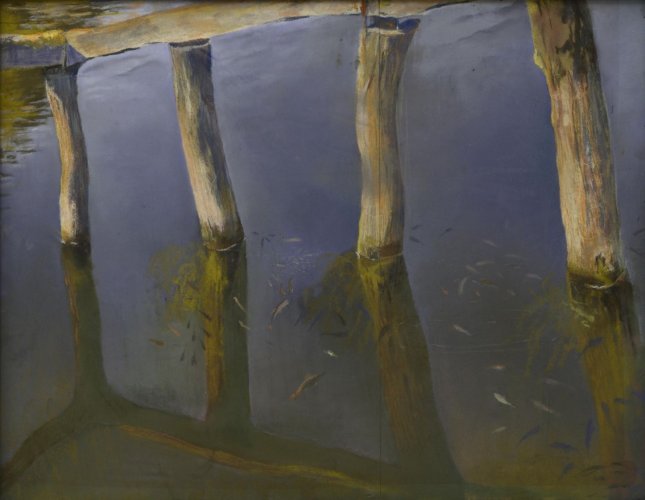Description:
Kazimierz Sichulski (1879-1943) graduated from Krakow Academy of Fine Arts. In 1904 he traveled around Europe, familiarizing himself with the contemporary art trends. In 1905 he visited Huculszczyzna, which became an inspiration for his work. While crossing the Carpathian mountains, he willingly portrayed the local mountaineers. This resulted, among other things, in three images presented in the Gallery, which are another reflection of the Young Poland fascination with the life of the simple people. The portraits of the Old and Young Hucul, as well as the young Huculka, were created during Sichulski’s first trip to Huculszczyzna. They were exhibited shortly after his return at the Krakow Society of Friends of Fine Arts and aroused interest of the critics and the president of the Society – Edward Aleksander Raczynski, who purchased them for his Gallery*.
Description of the painting:
In addition to the works of Kazimierz Sichulski already discussed, which refer to the characteristic fascination of Huculszczyzna, the donor of the Rogalinska Gallery also acquired three, now lost brilliant caricatures, of which the artist was a true master. But they will not be the subject of this story. It is the most intriguing work of the artist entitled “Fish” *. Edward Aleksander Raczyński bought this pastel around 1909, shortly after its painting and placed it in the large Room of the Rogalinska Gallery (currently it is presented in the Gallery of Polish Painting in the National Museum in Poznań).
According to researchers, “Fish” is “almost a textbook example”* of the fascination with Japanese art that was widespread at the turn of the centuries. From it come the compositional techniques applied in the image, such as the “bird’s eye view” and the segmented* and asymmetrical frame**.
This should also be added to the extremely important play of the empty background, which, in comparison with the main elements of the representation, acquires equal significance. The illusory, almost abstract vision of reality obtained in this way is so suggestive that it can lead to optical mistakes. An example is provided by the “Catalogue of the Rogalińska Gallery”, in which the colorful reproduction of the discussed work is wrongly reversed.
For Maria Gołąb, the author of the catalog note devoted to “Fish”, this “kind of abstract arrangement, in which the boundary between the view of what is real and unreal, between the object and its reflection is almost eliminated. The resulting questioning of the “objectivity” of the entire representation is deepened by the variability and unattainability of the water image. The title fish, whose silver commas break the surface of blue, do not provide sufficient support for this “reality”. This mysterious in essence canvas, surprises not only with the originality of the compositional arrangement, but above all with this play between different levels of pictorial reality. *
It seems that this image will remain a mystery to us for as long as we interpret it only from the point of view of borrowed Japanese compositional solutions without attempting to explore their background. Much suggests that Sichulski touched in this image the holistic essence of Far Eastern culture, which he transposed into his own, most likely Ukrainian realities.


